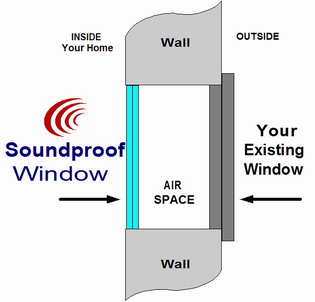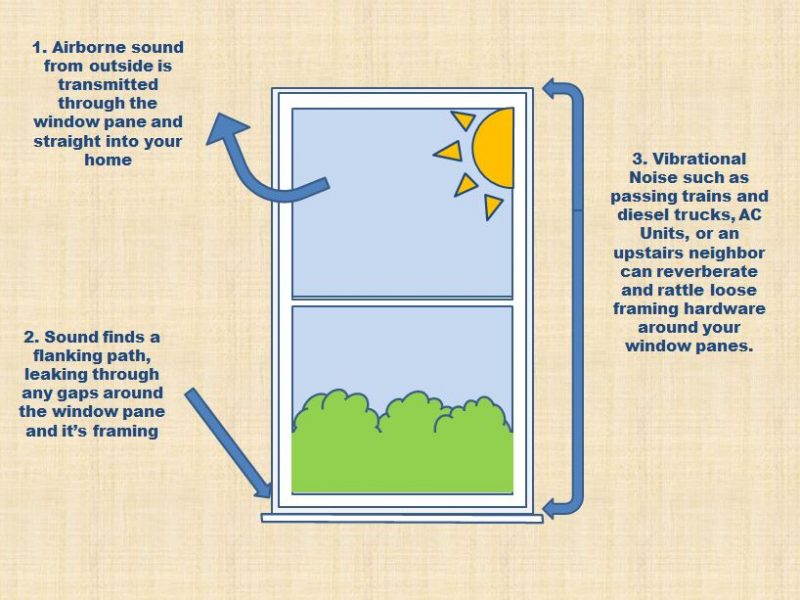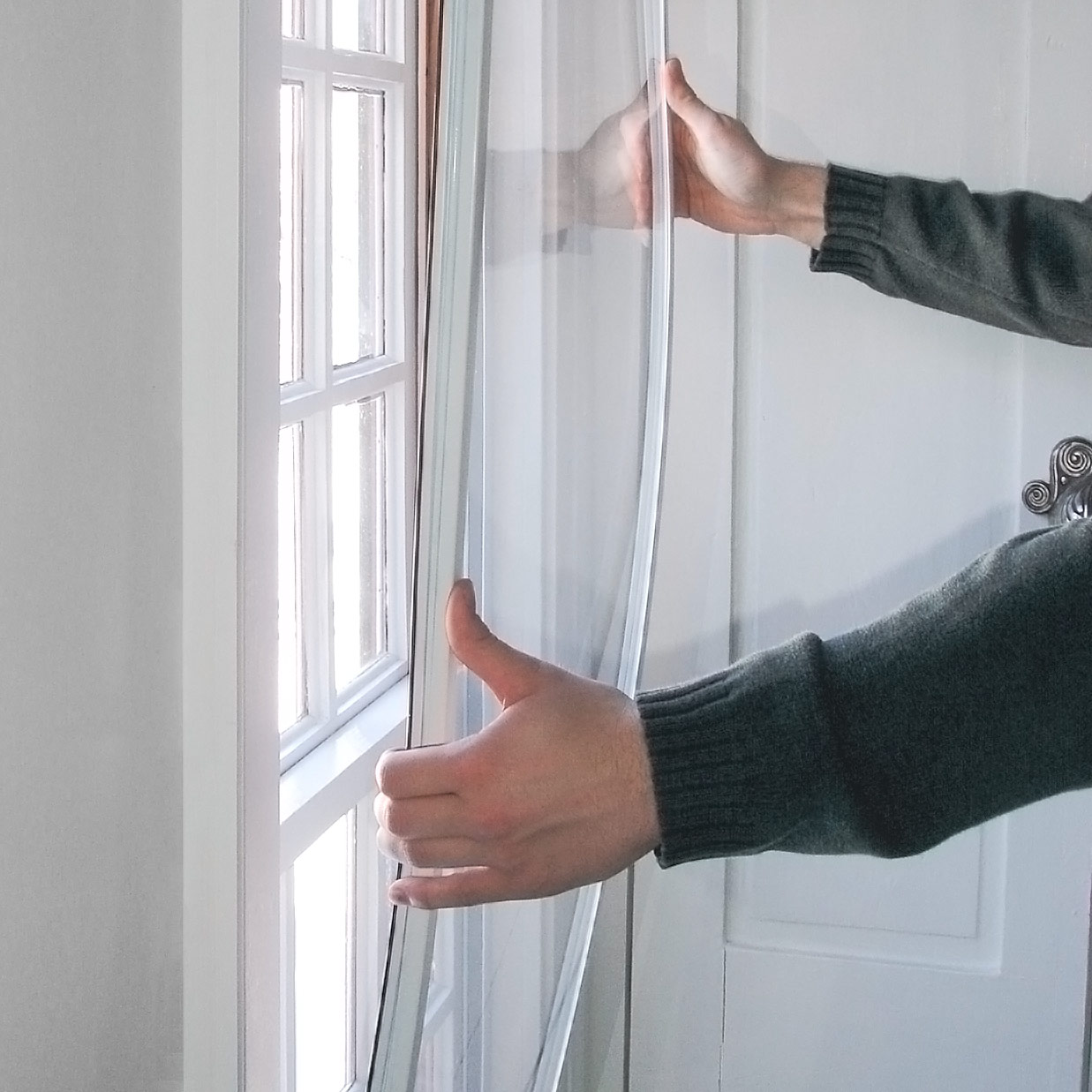Noise can be a big problem in our homes. It disrupts peace and makes it hard to relax.
If you want to enjoy a quieter space, soundproofing your windows is a great solution. Many people face issues with outside noise, like traffic or loud neighbors. Existing windows often let in unwanted sounds. Luckily, there are simple ways to reduce this noise.
With some easy methods, you can make your home more peaceful without replacing your windows. This guide will show you how to soundproof your current windows effectively. You’ll learn practical tips and tricks that are easy to follow. Enjoy the calm and comfort of a quieter home. Let’s dive in and explore these soundproofing techniques.

Credit: www.soundproofwindows.com
Introduction To Soundproofing Windows
Many homes face noise issues. Sounds from outside can disturb your peace. Soundproofing windows helps reduce this noise. It creates a calm environment inside your home.
Understanding how sound travels is key. Sound waves enter through gaps and thin glass. Stronger barriers help block these waves. Soundproofing windows can be an effective solution.
Why Soundproofing Is Essential
Soundproofing is important for many reasons. First, it protects your privacy. Loud noises can invade your personal space. This can make you feel uncomfortable.
Second, it helps improve focus. A quiet environment is better for work or study. Distractions from outside noises can reduce productivity.
Lastly, soundproofing enhances your home’s value. Homebuyers appreciate a peaceful living space. This can make your property more attractive.
Benefits Of A Quieter Living Space
A quieter living space brings many benefits. It promotes better sleep. Noise can disrupt your rest and affect health.
Less noise also reduces stress levels. Living in peace can lead to a happier life. You can enjoy your home without constant distractions.
Moreover, a soundproof home creates a cozy atmosphere. You can relax without external disturbances. This comfort can improve your overall well-being.
Identifying Noise Sources
Understanding noise sources is the first step to soundproofing your windows. Different types of noise require different solutions. Knowing where the noise comes from helps you choose the right methods. This will make your home quieter and more comfortable.
Types Of Noise To Block
Noise can come from various sources. Here are some common types:
- Traffic Noise: Cars, buses, and motorcycles can be loud.
- Construction Noise: Hammering, drilling, and machinery disrupt peace.
- Natural Sounds: Wind, rain, and thunder may enter through windows.
- Neighborhood Sounds: Dogs barking or children playing can be distracting.
Each type of noise has different characteristics. Understanding these helps in choosing the right solutions.
Assessing Your Window’s Vulnerabilities
Your windows may have weak points. Identifying these helps in effective soundproofing. Here are some areas to inspect:
- Gaps and Cracks: Check for openings around window frames.
- Single-Pane Glass: Older windows often use single-pane glass.
- Window Seals: Examine seals for wear and tear.
- Frame Material: Wood frames may not block sound as well as vinyl or fiberglass.
Use a flashlight to spot cracks. Close the window and listen. Identify the loudest sources. This assessment helps in choosing the right soundproofing methods.
Soundproofing Materials Overview
Soundproofing your windows can greatly reduce noise. Choosing the right materials is key. Each material has its own benefits and drawbacks. Understanding these will help you make a better choice.
Common Materials Used
Several materials are popular for soundproofing windows. These include acoustic panels, soundproof curtains, and weather stripping. Acoustic panels absorb sound waves. They are thick and often made from foam or fabric.
Soundproof curtains block noise from outside. They are heavy and designed to hang over windows. Weather stripping seals gaps in windows. This helps reduce sound leaks.
Pros And Cons Of Different Materials
Each soundproofing material has pros and cons. Acoustic panels are effective but can be costly. They also require proper installation.
Soundproof curtains are easy to use. They are often less expensive than panels. However, they may not block all noise.
Weather stripping is simple and affordable. It is easy to install. Yet, it may not provide enough soundproofing for very loud areas.
Choosing the right material depends on your needs. Consider your budget and the noise level in your area.
Sealing The Gaps
Sealing the gaps around your windows is crucial for soundproofing. Sound can easily travel through small openings. You can block noise effectively with a few simple methods. This section will cover two main techniques: weatherstripping and acoustic sealants.
Weatherstripping For Sound Insulation
Weatherstripping is an easy way to reduce noise. It fills the gaps around your windows. You can find weatherstripping in various materials like foam, vinyl, and rubber. Choose a type that fits your windows well.
To apply weatherstripping, clean the window frame first. Measure the length of the gaps. Cut the weatherstripping to size. Peel off the backing and press it firmly into place. This will create a tight seal and block sound.
Using Acoustic Sealants
Acoustic sealants are another option for soundproofing windows. They are designed to stay flexible and fill gaps. Unlike regular caulk, acoustic sealants absorb sound waves. This helps reduce noise from outside.
To use acoustic sealants, start by cleaning the area around the window. Apply the sealant in the gaps using a caulking gun. Smooth it out with your finger or a tool. Allow it to cure completely for best results.
Upgrading Window Panes
Upgrading window panes can significantly reduce noise. Old windows often let in unwanted sounds. Newer technology offers better options for soundproofing. Let’s explore two main choices: dual vs. triple pane glass and laminated glass.
Dual Vs. Triple Pane Glass
Choosing between dual and triple pane glass matters. Each option has unique benefits.
| Feature | Dual Pane Glass | Triple Pane Glass |
|---|---|---|
| Noise Reduction | Moderate | High |
| Energy Efficiency | Good | Excellent |
| Weight | Lighter | Heavier |
| Cost | Lower | Higher |
Dual pane glass has two layers. It offers decent soundproofing and energy efficiency. Ideal for moderate noise areas.
Triple pane glass has three layers. It provides superior noise reduction and energy savings. Best for very noisy environments.
Laminated Glass Options
Laminated glass is another effective choice. It consists of two glass layers with a plastic layer in between. This design dampens sound better than regular glass.
- Excellent sound insulation
- Reduces UV rays
- Increases security
Laminated glass is available in various thicknesses. Thicker options enhance soundproofing. Consider your specific noise needs.
Investing in upgraded window panes improves comfort. Enjoy a quieter home with less disturbance. Choose wisely between dual, triple, or laminated glass.
Adding Soundproofing Curtains
Adding soundproofing curtains can help block unwanted noise. These curtains are thick and dense. They absorb sound waves. This makes your room quieter. They also add a stylish touch to your windows.
Selecting The Right Curtains
Choosing the right soundproofing curtains is crucial. Consider these factors:
- Material: Look for heavy fabrics like velvet or polyester.
- Thickness: The thicker, the better for sound absorption.
- Length: Curtains should be floor-length for maximum coverage.
- Color: Choose a color that fits your room’s decor.
Here is a simple table to help you:
| Material | Sound Absorption Level |
|---|---|
| Velvet | High |
| Polyester | Medium |
| Canvas | Low |
Installation Tips
Proper installation is key for soundproofing curtains. Follow these tips:
- Use a sturdy curtain rod. It should hold the weight of the curtains.
- Hang the curtains as close to the wall as possible.
- Make sure they touch the floor for best coverage.
- Consider adding a valance to cover the top gap.
Check for gaps around the edges. Seal any openings to prevent sound leaks. Adjust the curtains regularly for optimal soundproofing. Enjoy a quieter home with your new soundproofing curtains.
Installing Window Inserts
Soundproofing your home can be a simple task. One effective method is installing window inserts. These inserts create an additional barrier against noise. They fit over existing windows and help block sound. This solution is cost-effective and easy to install.
Benefits Of Acoustic Inserts
Acoustic inserts provide several advantages for soundproofing your windows:
- Noise Reduction: They significantly lower outside noise levels.
- Energy Efficiency: Inserts can help keep your home warm or cool.
- Easy Installation: Most inserts are simple to install without special tools.
- Cost-Effective: They are cheaper than replacing windows.
- Less Dust and Allergens: Inserts can block dust and pollen.
Step-by-step Installation Guide
Installing window inserts is straightforward. Follow these steps for best results:
- Measure Your Windows: Use a tape measure to get accurate dimensions.
- Choose Your Inserts: Select the right acoustic inserts based on your measurements.
- Clean the Window Area: Remove dust and debris from the window frame.
- Prepare the Inserts: Follow the manufacturer’s instructions for any necessary adjustments.
- Install the Inserts: Place the inserts inside the window frame. Ensure they fit snugly.
- Seal Edges: Use weather stripping or caulk to seal any gaps.
- Test for Sound Reduction: Close the window and listen to the difference.
Using these steps, you can effectively install window inserts. Enjoy a quieter, more peaceful environment.

Credit: residential-acoustics.com
Diy Soundproofing Techniques
Soundproofing your windows can be simple. You can use effective methods at home. These DIY techniques help reduce noise. They are easy to do and affordable. Let’s explore some practical ways to soundproof your windows.
Creating Your Own Window Plugs
Window plugs are great for blocking sound. They fit snugly into your window frame. You can make them with simple materials. Use foam board or acoustic panels. Cut them to match your window size.
Cover the foam with fabric. Choose thick, heavy fabric for better results. This adds an extra layer of sound absorption. Insert the plug into the window when needed. Remove it easily when you want fresh air.
Affordable Soundproofing Hacks
There are many budget-friendly ways to soundproof. Start with weather stripping. Apply it around the window frame. This helps seal gaps and block noise.
Use heavy curtains or soundproof blinds. They absorb sound waves effectively. Hang them over your windows for better results. Thick rugs on the floor also help reduce noise.
Consider adding bookcases or furniture near windows. They act as extra barriers against sound. These simple hacks make a big difference.
Maintaining Soundproof Windows
Maintaining soundproof windows is important for comfort. Regular care helps keep noise out. Proper maintenance extends their life. Here are some tips to ensure your windows stay effective.
Regular Check-ups And Repairs
Check your soundproof windows often. Look for gaps or cracks. These can let noise in. Seal any openings you find. Check the seals around the windows too. If the seals are damaged, replace them quickly.
Inspect the frame and glass. Look for signs of wear. If you see any issues, address them right away. Regular maintenance keeps your windows working well.
Enhancing Longevity Of Soundproofing
Keep your windows clean. Dirt can affect their performance. Use a soft cloth and mild cleaner. Avoid harsh chemicals that can damage the seals.
Consider adding window treatments. Heavy curtains can further reduce noise. They also add style to your room. Choose materials that block sound effectively.
Ensure proper insulation around windows. Good insulation helps with soundproofing. It can also save energy. Regularly check for air leaks. Fix any leaks you find to enhance performance.

Credit: acousticalsolutions.com
Conclusion: Embracing The Silence
Creating a quiet home is important. Soundproofing existing windows can help. Embrace the peace that comes from reduced noise. Follow the steps to make your space more tranquil.
Recap Of Soundproofing Steps
- Seal gaps around the window frame.
- Install weatherstripping for a tight fit.
- Add soundproof curtains for extra layers.
- Use window inserts to block noise effectively.
- Consider acoustic panels in the room.
Anticipated Results And Peace Of Mind
After soundproofing, enjoy a quieter environment. Expect these results:
| Benefit | Description |
|---|---|
| Noise Reduction | Less external noise entering your home. |
| Improved Focus | Easier to concentrate on tasks. |
| Better Sleep | Fewer disturbances during the night. |
| Increased Comfort | A cozy and peaceful living space. |
These benefits lead to a more relaxed lifestyle. Experience peace of mind in your quieter home.
Frequently Asked Questions
How Can I Soundproof My Existing Windows?
To soundproof existing windows, consider using window inserts or acoustic curtains. Window inserts create an additional layer of glass, reducing noise significantly. Acoustic curtains absorb sound waves, providing a simpler solution. Both methods are effective for minimizing outside noise without extensive renovations.
What Materials Are Best For Window Soundproofing?
The best materials for window soundproofing include laminated glass, acoustic caulk, and weather stripping. Laminated glass is dense and reduces noise transmission. Acoustic caulk seals gaps effectively, preventing sound leaks. Weather stripping adds an extra layer of insulation, enhancing overall soundproofing.
Do Soundproof Window Films Work?
Yes, soundproof window films can help reduce noise. These films are designed to block sound waves while maintaining visibility. They are an affordable option for enhancing sound insulation. However, their effectiveness varies based on the noise frequency and the film’s quality.
How Much Does Soundproofing Windows Cost?
The cost of soundproofing windows varies widely based on chosen methods. Window inserts typically range from $300 to $800 per window. Acoustic curtains can cost between $50 and $300 depending on size and material. Budget for installation costs if hiring professionals for window treatments.
Conclusion
Soundproofing your windows can greatly improve your comfort. It reduces noise from outside. You can use thick curtains, window film, or weatherstripping. Each method is simple and effective. Take time to choose what fits your needs best. Enjoy a quieter home with less disturbance.
This small change makes a big difference. Don’t let outside noise affect your peace. Start your soundproofing journey today for a more relaxing environment.

